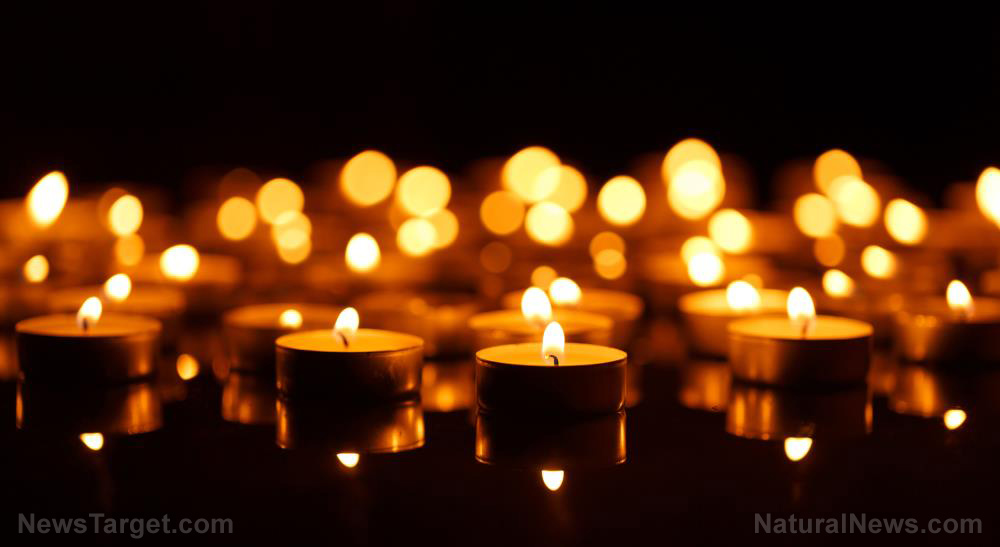
Lighting a candle is one of the most reliable ways to light up a room. Sure, there are other sources of light like flashlights, headlamps and solar-powered landscape LED lights that will come in handy during grid-down situations. But when the power outage takes longer than expected, you'll need a back-up plan to keep the light and heat in your home.
Candles cost per hour to burn
Take a look at the following types of candles and how much they cost per hour to burn: (h/t to ModernSurvivalBlog.com)
- Votive or prayer candles – These are some of the cheapest candles around. They cost as little as 2 cents per hour and burn for as long as 10 hours.
- Tea light candles – These candles cost as low as 2 cents per hour and glow for as long as four hours.
- Pillar candles – Five-inch-thick pillar candles cost as low as 8 cents per hour and last for as long as 40 hours.
- Taper candles – Seven-inch-long taper candles last for seven hours and cost as low as 9 cents per hour.
Besides burn time, there are other things you need to consider when buying candles: (h/t to PrimalSurvivor.net)
- Number of wicks – Choose candles with multiple wicks as these allow you to adjust the brightness of the candle by lighting or extinguishing wicks. However, be warned that manufacturers usually calculate burn time by one wick. This means that a candle with three wicks might have its burn time listed as 36 hours even though its actual burn time when all three wicks are lit is just 12 hours.
- Scent – Avoid buying scented candles especially if you're prone to headaches.
- Stability – Choose candles that don't tend to topple over for safety. Tapered candles have poor stability, so you can either buy other types of candles or use candle holders.
- Types of wax – Look for candles made of soy wax and beeswax as these are safer and slow-burning. Avoid toxic waxes like paraffin.
You need to figure out how many emergency candles you'll need. First, determine how many hours of lighting you'll need per day and how many days you're preparing for. A good rule of thumb is to estimate at least six hours of lighting per day and prepare for a minimum of three days of emergency lighting.
Now, calculate the total hours of lighting. Multiply the number of hours of lighting per day by the number of days you're preparing for. You'll probably need 18 hours of lighting for the entire duration of a three-day power outage. (Related: Putting together a three-day survival kit: What you’ll need in an emergency.)
Don't forget to calculate how much space you'll illuminate. Some candles burn brighter than others, but in general, you'll need five to 10 candles per room. Therefore, if a candle's burn time is nine hours, you'll need 10 to 20 candles per room for 18 hours of lighting.
Candle safety tips
Take a look at the following safety tips to prevent fires:
- Set a candle on a solid, non-flammable base or holder.
- Do not place a candle near anything flammable like curtains.
- Keep candles, matches and lighters out of reach of children.
- Do not place a candle where pets can reach it.
- Do not forget to put out all candles in the house before sleeping or leaving your home.
Be sure to store your emergency candles away from direct sunlight to prevent the wax from melting. Though electric sources of light are safer, candles still have a place in your prepping toolkit. Use this guide when preparing for a power outage.
Sources include:
Please contact us for more information.














